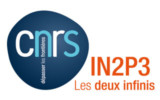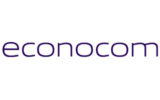White paper – Reducing the environmental impact of home LANs
Whatever the sector of activity, reducing energy consumption, and more generally the environmental footprint, has become a major concern for organizations. For telecom operators, one of the challenges is to optimize the consumption of Internet boxes and TV set-top boxes, which by definition are used in most homes.
The "Sustainability of the Home LAN" white paper assesses the environmental impact of this equipment and lays the foundations for immediate and longer-term action to reduce the environmental footprint of home LANs.
Georges Ouffoué, Lab-by-APL’s operational manager and digital specialist, contributed to the production of this white paper, “Sustainability of the Home LAN”, written by Benjamin Schwarz, consultant at CTOi Consulting, in partnership with Orange, Broadpeak, Sagemcom and SoftAtHome.
The findings are unequivocal: for Orange France, the consumption of Internet boxes and set-top boxes amounts to 100 kWh/year, in other words:
- Double the consumption of the operator’s IP network;
- 10% of Orange France’s total carbon emissions.
With regard to short- and longer-term actions to reduce the environmental footprint of home LANs, this white paper suggests a number of avenues:
- Standby mode accounts for 77% of the total consumption of home LAN appliances. An improved standby mode, with more intelligence via the development of more efficient middleware, combined with raising awareness among users, could reduce energy consumption by 10% to 20%, without the need for major investment.
- For future set-top boxes and decoders, we recommend the use of latest-generation electronic components and SoC architecture, as they are better suited to low-power modes.
- WiFi offloading, or optimizing cloud and local resources for storage and computing operations.
Download the « Sustainability of the Home LAN » white paper
Find out how telecom operators can currently achieve their CSR objectives, contribute to environmental protection, participate in the development of standards and meet user expectations.
Download the white paper




















